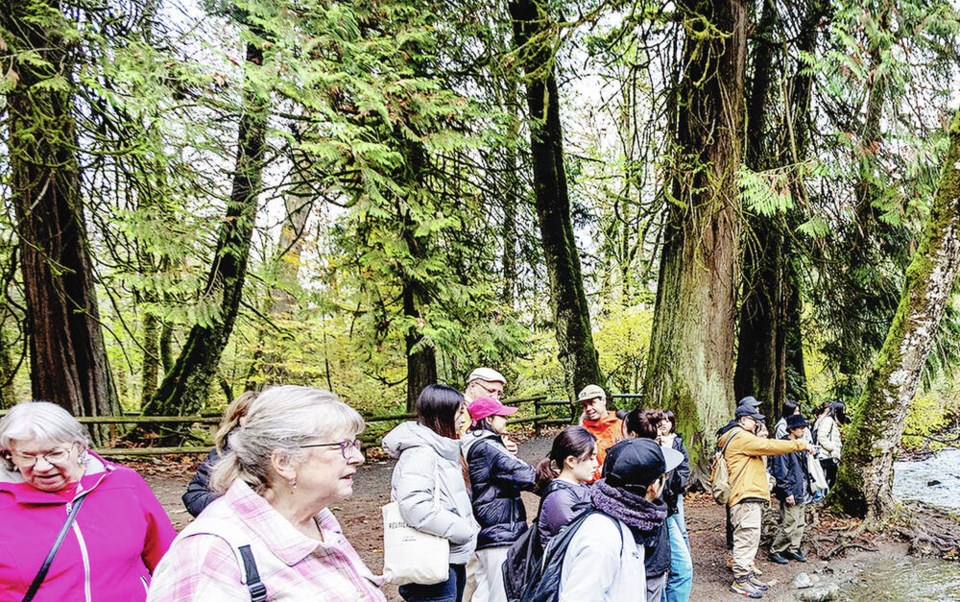The return of chum and coho salmon to spawn in the Goldstream River so far is well below last year, according to hatchery officials monitoring the run.
Peter McCully, technical adviser of the Goldstream Hatchery, said only 1,500 chum had been counted on the river as of Saturday. That’s a sharp decline from last year, when 5,100 were counted up to the same date.
Coho have also fallen short this year, said McCully, with only 300 to 400 counted at the fish fence further up the river, though heavy rains last week and a big fall of maple leaves weighed down the fence and likely caused some coho to slip over unnoticed.
The Goldstream is coming off a banner year for chum salmon, with 33,000 returning to spawn last year. The average return is 20,000 and the Department of Fisheries and Oceans had estimated a return estimate of 15,000.
In 2021, a year that saw extreme flooding and damages to spawning beds and river systems, only 4,000 salmon returned to the Goldstream. Some worried that the swift water might have swept away incubating eggs and sent salmon prematurely out to sea.
McCully said it might be too early to tell the fate of the salmon run this year, as the peak return is expected over five days starting next Sunday.
Heavy rain last week helped to fill the river and two weeks ago, the Capital Regional District started releasing 10 million gallons a day from the Goldstream reservoir into the river to entice salmon in to spawn.
The CRD reported its Goldstream reservoir was at 78% of capacity on Sunday.
“The water is sufficient now for the fish to come in,” said McCully. “But we really need more rain to fill the gap, and for the fish to arrive. We’re very much behind at this point.”
McCully said First Nations guardians are watching the entrance to Saanich Inlet and in Finlayson Arm for returning salmon, and he expects their reports to come in this week.
McCully said it’s likely extreme drought the past several years is affecting the numbers of fish returning.
He said the hatchery may have difficulty collecting eggs to raise as fry if the salmon run is low. The facility has been able to take some brood stock for egg production as it usually supplies many smaller spawning streams in the capital region with fry.
McCully said the hatchery has also been able get a good supply of coho eggs and fry from Shawnigan Creek over the past several years. The coho run in Shawnigan Creek was started by fish from Goldstream years ago, and is now being used to supplement the Goldstream run when returns are low.
Ian Bruce, a biologist with the Peninsula Streams Society, said the region needs rain to fill creeks and rivers, a signal that will bring the fish in to spawn.
Bruce said several area streams like the Millstream, Colquitz and Craigflower are showing extremely low fish returns, if any at this point, because of the drought and low water levels.
“It’s grim, very low, at this point,” said Bruce, adding the fish are being kept out at sea and likely suffering predation from otters, seals and other pinnipeds who feed on salmon as a result.
“What we need is a good pulse of rain right away to bring them in, and then a steady rain for quite a few days.”
dkloster@timescolonist.com
>>> To comment on this article, write a letter to the editor: letters@timescolonist.com



